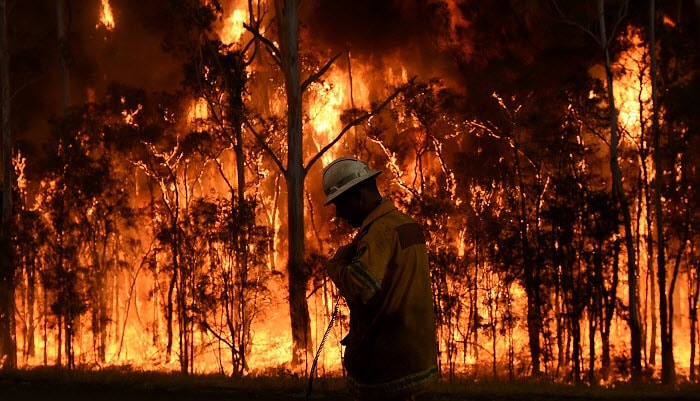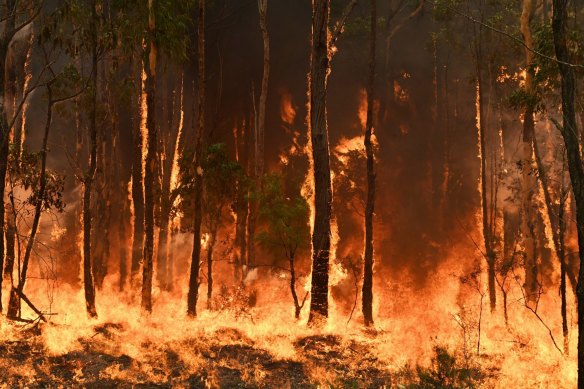BAL Report Principles: Essential Information for Homeowner
BAL Report Principles: Essential Information for Homeowner
Blog Article
Exactly How BAL Report Impacts Shrub Fire Defense Measures
In the realm of bush fire security, the Building Assault Level (BAL) report stands as an important device that dramatically affects the safety and security and strength of properties in fire-prone areas - BAL Report. The influence of a BAL evaluation expands far beyond plain paperwork; it serves as the keystone for determining the suitable construction criteria and fire defense measures essential to mitigate the threats posed by bushfires. As neighborhoods grapple with progressively serious fire periods, comprehending just how the BAL record forms these safety actions becomes vital for house owners, policymakers, and builders alike
Comprehending the Bushfire Assault Degree

Relevance of BAL Record Analysis

In Addition, the BAL report evaluation functions as a fundamental action in following legal responsibilities and needs associated with bushfire defense. Neighborhood councils and authorities typically mandate the submission of a BAL report as part of the planning and building approval process to ensure that residential or commercial properties are appropriately guarded against bushfire risks. Failing to conduct an extensive BAL report evaluation can result in inadequate protection measures, leaving homes prone to ravaging bushfire events.
Construction Standards Based on BAL
A comprehensive understanding of the Bushfire Attack Degree (BAL) allows home owners to implement construction standards customized to their certain danger account. Building requirements based upon BAL are crucial in reducing the effect of bushfires on buildings. The BAL score categorizes the prospective risk a residential or commercial property encounters during a bushfire on a range from BAL-Low to BAL-FZ (Flame Zone) Each BAL degree represents details building needs laid out in the Australian Conventional AS3959-2018 Construction of Structures in Bushfire-Prone Areas. For example, residential properties classified as BAL-Low might only need fundamental measures such as removing debris and preserving yards, while those in higher BAL groups need more durable measures like ember displays, fire-resistant products, and sealed windows. Sticking to these building and construction standards not just improves the architectural resilience of the building but likewise boosts the overall security of citizens throughout a bushfire occasion. Building proprietors should carefully consider their BAL ranking and conform with the matching construction standards to effectively guard their passengers and homes.
Carrying Out Fire Protection Measures
With the structure of building and construction requirements based on Bushfire Strike Level (BAL) in position, the focus currently moves towards the functional application of fire security steps to strengthen residential or commercial properties versus bushfire risks. Carrying out fire security measures includes a combination of passive and active methods to improve the strength of buildings in bushfire-prone locations. Passive actions consist of using fire-resistant structure materials, mounting cinder guards on vents, securing gaps in walls and roof coverings, and preserving a clear room around the home free from combustible greenery. Energetic actions encompass having firefighting devices conveniently offered, such as tubes and water pumps, as well as developing a defendable room around the building by removing plants and having a properly maintained garden. Furthermore, developing an emptying strategy and ensuring all locals recognize emergency situation procedures are important components of Our site effective fire defense procedures. By integrating both passive and active strategies, residential properties can considerably decrease their vulnerability to bushfire occurrences and boost the safety of residents.
Shielding Homes Against Bushfires
Effectively guarding homes against the devastating influences of bushfires calls for a proactive and detailed approach to fire defense steps. Homeowners living in bushfire-prone locations must focus on the implementation of numerous strategies to improve their building's durability versus wildfires. One fundamental element is developing a defensible space around the home by preserving a clear area complimentary of combustible materials. This includes routinely cutting greenery, getting rid of dead plants, and guaranteeing a risk-free range in between structures and trees. Mounting fireproof roof covering materials can additionally substantially reduce the risk of cinder assaults and straight flame call. Additionally, securing vents and gaps to stop ember intrusion, as well as integrating fire-resistant doors and home windows, can assist fortify the home's protection against bushfires. Investing in a reputable water resource, such as a well-kept lawn sprinkler or a specialized water container, is important for providing water during fire emergencies - BAL Report. By accepting a positive stance and integrating these protective measures, house owners can significantly increase their chances of guarding their homes versus bushfires.
Verdict
In verdict, the Bushfire Strike Level (BAL) record plays an important duty in determining the required security measures against bushfires. Carrying out fire defense measures based on the BAL report is vital in safeguarding properties from potential bushfire risks.
In examining bushfire threat to residential or commercial properties, comprehending the Bushfire Assault Degree (BAL) is an essential part for applying effective security steps. In general, a clear understanding of the Bushfire Assault Level is important for carrying out appropriate security procedures and alleviating the influence of bushfires on buildings.

Report this page